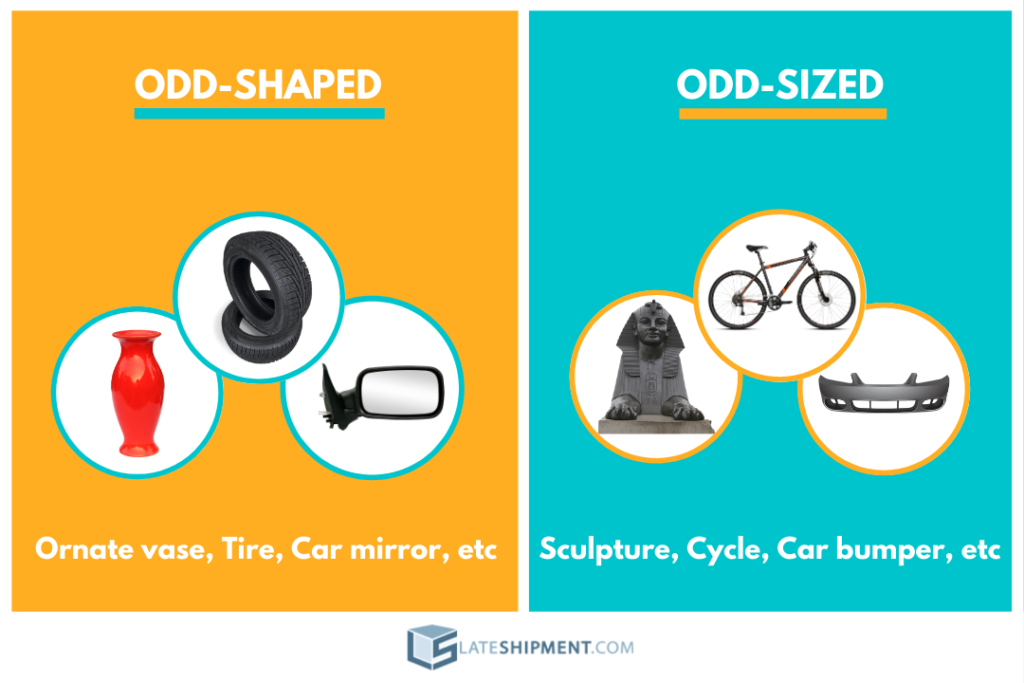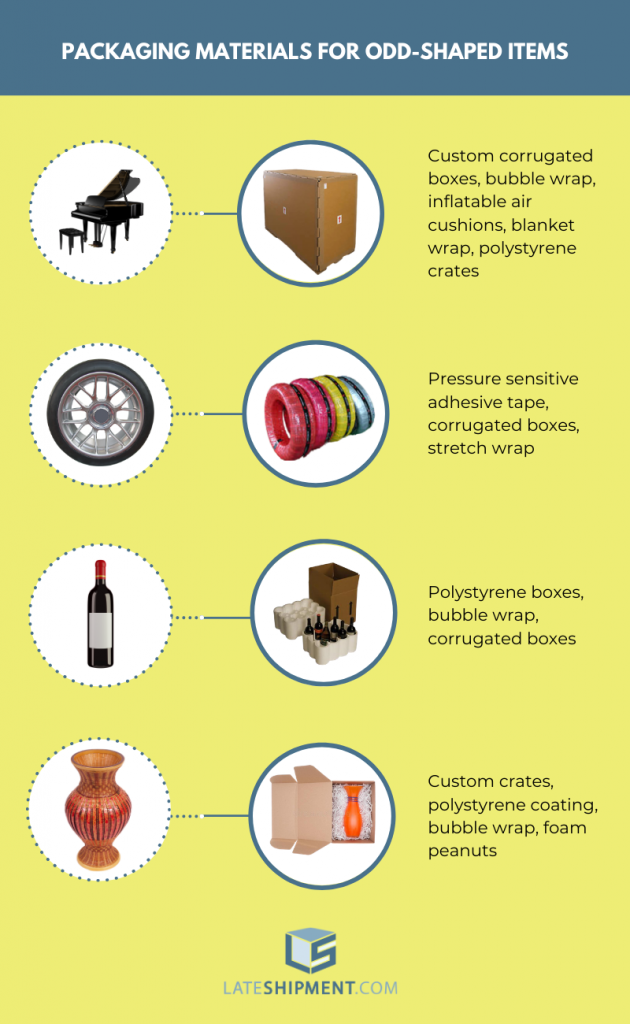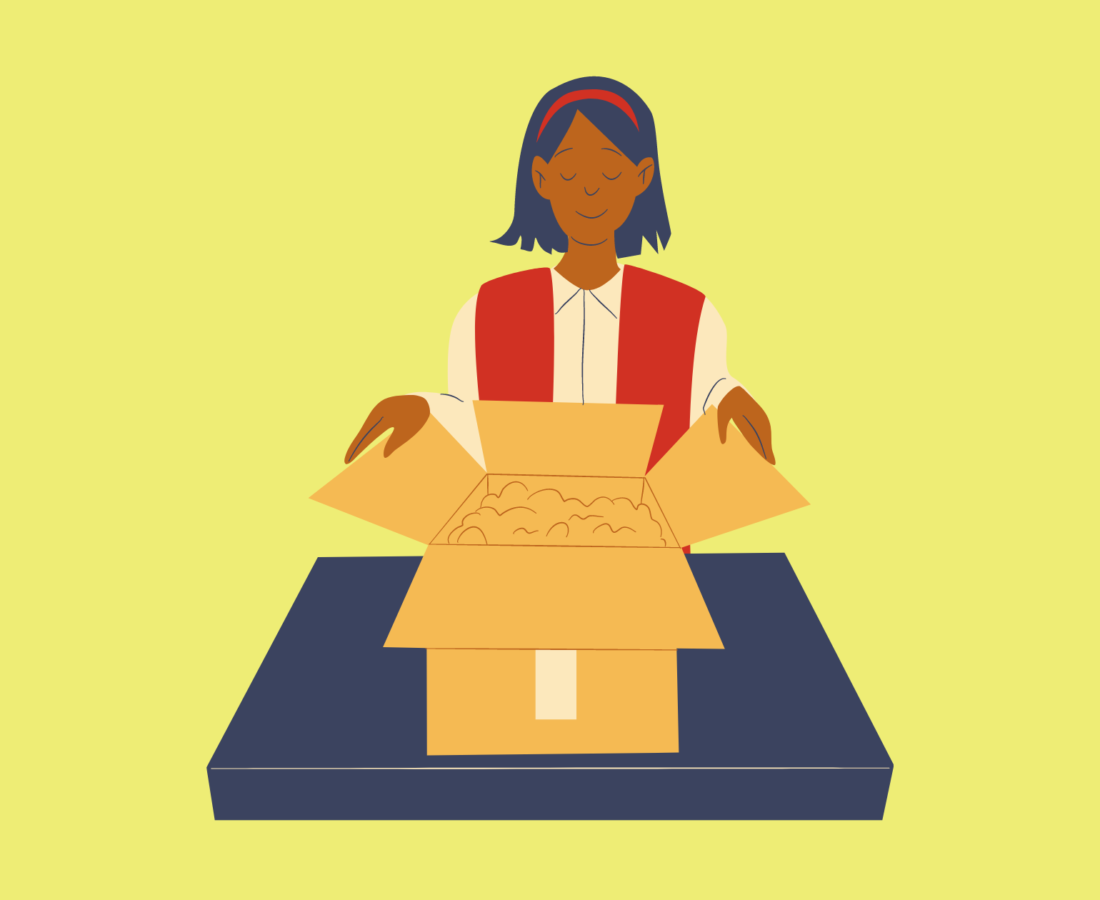People judge a book by its cover, a movie by its trailer, and a parcel by its packaging.
When you ship a product across and the customer has a first look, the packaging that matters.
A neatly-packaged product delivered without any flaws speaks volumes about brand credibility more than a wonderful product that turns up at a customer’s doorstep haphazardly packed.
But packaging isn’t as easy as it sounds. It is an exhaustive task that requires considerable planning and work.
Packaging heavily depends upon the types of products that you sell.
T-shirts, books, pillow covers, etc. are fairly straight-forward and don’t entail much worry. But what about packaging odd-shaped objects? Well, that certainly requires some creativity.
Let’s explore how one can package odd-shaped and odd-sized products not just flawlessly and creatively but also efficiently.
But first…
What Are Odd-Shaped/Sized Objects?
An odd-shaped object can be anything from an ornate vase to a car mirror, or a tire. Basically, anything that doesn’t fit into the mold of a square or a rectangle.
Let’s say you have a sculpture, cycle, or even a car bumper to ship; they fall into the category of odd-sized objects as they cannot be contained within a usual carton box.

Why Packing Odd-Shaped/Sized Objects Can Be a Headache
Shipping odd-shaped or odd-sized objects can definitely be a headache because:
- Your packages could hit the over-sized category
- Shipping them will be expensive
- They need special packaging
- And they might be logistically challenging.
Particularly if you’re a retailer dealing in odd/oversized products, imagine shelling out significantly high amounts month on month in the form of shipping costs!
Read till the end to know how you can effortlessly save up to 20% on your shipping costs!
Like we said earlier, packaging odd-shaped and odd-sized objects certainly requires some creativity. But it’s not rocket science, so let’s see how you can DIY!
How to Pack Odd-Shaped/Sized Items
Packing odd-shaped objects is not rocket science.
But how exactly do you pack them in the first place?
The secret ingredient is picking the right packaging material that will ensure easy wrapping as well as utmost safety in transit.
Packaging odd-shaped objects has been made much easier with the variety of materials available today.
What Are the Materials Used for Packaging
Some of the widely used packaging materials include sturdy cardboard boxes, bubble wrap, shrink wrap, stretch wrap, polystyrene, corrugated plastic, inflatable air cushions, paper, plastic-coated paper, pressure-sensitive tape, foam sheets, and styrofoam peanuts.
The following infographic shows what materials can be used to package some of the most common odd-shaped items.

Most odd-shaped or sized objects can just fit into your corrugated box with the right packing materials. However, in some cases, your odd-shaped object can be larger than a single box and may require more protection than a plastic wrap.
In that case, it is best to get custom-shaped boxes or make them yourself
How to Make Your Own Custom Boxes
If you prefer to make your own boxes for packaging, you need to keep in mind that it can entail significant time and effort. This after you have done your research to choose the right kind of packaging for your product.
Otherwise, all it takes is some creativity to make odd-sized boxes.
- Once you have wrapped and secured your odd-shaped object, place it in a sturdy cardboard box.
- Take another, similar box and place it below or next to the first box, based on your object’s dimensions.
- Remove the flaps of the second box to have an extra tall/wide packaging container.
- Properly seal the boxes together.
Here Are 7 Packaging Tips that Will Come in Handy:
- Use corrugated boxes for rolled goods. A bag or plastic covering is usually not enough.
- If you’re packing a tire, use pressure-sensitive tape to wrap around the entire width of the tire in a full circle.
- Do not leave any sharp edges poking out. Paste pieces of cardboard or use small polystyrene covering to blunt the edges.
- Protect the item by adding layers of bubble wrap, crumpled paper, or foam sheets based on the value of the package. This will ensure that the content sits securely within the box. Also, add a layer of protection on top of the object before closing the lid.
- Always test the strength of the box you’re using, especially if you’re packing heavy items like working models or gym equipment.
- Add a sign that says your package is “fragile” with directions on how to carry it as a guide for the handlers at the carrier facility.
- If you cannot find a surface flat enough to stick the address on, use a transparent tape to fully tack it on the object. This will ensure that the address strip does not fall off easily or get lost during transit.
How to Do It the Cost-Effective Way
Considering how most odd-shaped items are packed in boxes that are too big for them, it is no wonder the Dimensional pricing hits the roof.
There are times when you realize the cost of shipping and product costs are almost on the same level.
Custom crates too cost an arm and a leg these days.
So, how to make packaging cost-effective?
The DIY method has its pros and cons. On one hand: it is cost-effective and you, better than anyone, know the perfect fit for your products.
On the other hand, packaging weird-shaped objects is a tedious and cumbersome process. Also, say if your package was damaged in transit, the onus is on you as carriers won’t accept the liability.
To counter skyrocketing shipping prices, retailers can make efficient use of packing materials to decrease the dimensional weight of their parcels as much as possible. Going with cost-effective packaging options based on an object’s requirements also helps.
How to Handle DIM Weight Challenges
Shipping carriers have shifted to the Dimensional Weight Pricing method, where the cost of the shipment depends on the dimensional weight rather than on the actual weight of the package.
In the case of most odd-sized packages, the DIM weight is considerably more than the actual weight of the object.
For example, a sports goods manufacturer who deals with custom-made helmets or baseball bats or golf clubs will pay for boxes that are not a snug fit for the goods being shipped.
The odd shape of a golf club or a bat defies the dimensions of any ordinary box and the box will have to be stuffed with other packaging materials to ensure a tight fit.
The shipper ends up paying for the oversized box, the packing peanuts or paper, apart from additional surcharges.
One of the best ways to counter this situation is to negotiate with your shipping carrier and reduce the DIM weight denominator by which you are billed. This has the potential to reduce your shipping costs.
All things said and done, there are chances that you may still overpay your shipping carrier. To counter this, you can make use of a parcel audit solution like LateShipment.com that can claim shipping refunds on your behalf.
Go Beyond Functionality
Packaging in today’s retail sphere is about much more than just functionality.
So, whatever your item’s shape or size may be, try and customize it to suit your brand image. This can increase brand recall even among new customers and will give your eCommerce store an edge over competitors.
A personalized tag or unique wrapping paper can make a lot of difference.
With sustainable practices such as green packaging becoming the norm these days, you can also opt for biodegradable materials or those that can be reused and recycled later. By going green, you not only reduce your carbon footprint but make an impact on your customer’s mind as an ethical brand.
The better your packaging, the more lasting your customers’ impression will be. Quality packaging will increase customer trust in your brand and build a perception that is highly beneficial for your brand in the long run.
As for packaging materials, use locally sourced items as much as possible.
Reuse boxes as much as you can, and build custom-sized ones out of bigger old ones.
Put all that glue, tape, and knives to good use by creating the perfect-sized boxes. This will ensure that you don’t need to unnecessarily stock up on corrugated boxes or other packaging materials and leave them lying around.
On the off chance that there’s an item that is exceptionally hard to package, you can always go in for the professional packaging services offered by FedEx, UPS, or another carrier.
Both FedEx and UPS offer a safety guarantee on their packaging, so your product will be in good hands. If you’re shipping electronics, then it’s a great idea to use them.
Learn more here:
A Little about LateShipment.com
LateShipment.com is the world’s only logistics cloud tool that helps businesses of every size reduce shipping costs by up to 20% and provide memorable delivery experiences to customers at scale.
At LateShipment.com, our focus has remained steadfastly on the last mile, typically the part of the logistics chain that is the most opaque.
LateShipment.com allows you to have your monthly shipping invoices automatically audited for 50+ shipping carrier service failures and claims refunds on your behalf. The claimed amount is directly deposited into your account. This can save you up to 20% on your overall shipping spend.
Our automated shipping refunds solution:
- Audits your monthly shipping invoices
- Submits refund claims to your carrier(s) on your behalf
- Deposits the refunded amount directly into your account
That’s not all!
LateShipment.com’s Delivery Experience Management platform helps you craft outstanding post-purchase experiences and build long-lasting customer relationships.
Our groundbreaking post-purchase solutions help businesses effortlessly bridge the post-purchase CX gap and discover new ways to delight and retain customers.
Our high-impact post-purchase offerings allow you to:
- Stay on top of order deliveries, particularly those facing delays
Track in-transit shipments in real-time across multiple carriers on a single dashboard.
Receive predictive alerts about parcels facing delivery delays & take remedial action.
- Over-communicate and reduce customer anxiety post-purchase
Proactively identify and communicate with customers facing delivery issues.
Automate order status notifications via eMail or SMS throughout the delivery lifecycle.
- Reinforce your brand identity with custom order-tracking assets
Provide brand-consistent order tracking pages to customers & drive repeat purchases.
Embed self-serve order tracking widgets on your website and order-related emails.
- Leverage order tracking moments to increase sales and reduce returns
Increase sales with personalized product recommendations on your tracking page.
Reduce returns by providing relevant product usage information on tracking assets.
- Know if customers were satisfied or not with their delivery experience
Capture customers’ Delivery Satisfaction (DSAT) rating after every order delivery.
Measure the average DSAT score of every customer to optimize shipping & delivery processes.
- Access data-rich reports
Gain critical insights about your shipping spend and carriers’ delivery performance across service types and geographies to take data-driven decisions and make shipping efficient.
How good is that?
The best part is, it takes less than 2 minutes to see LateShipment.com in action without any change to your existing workflow.
The value we add to businesses is most evident when experienced first-hand. Try LateShipment.com now.



![SEO for eCommerce_ Top Challenges to Be Wary Of [2020] Blog Header](https://lswordpress.s3.amazonaws.com/blog/wp-content/uploads/2020/10/01042626/SEO-for-eCommerce_-Top-Challenges-to-Be-Wary-Of-2020-Blog-Header-150x150.png)





